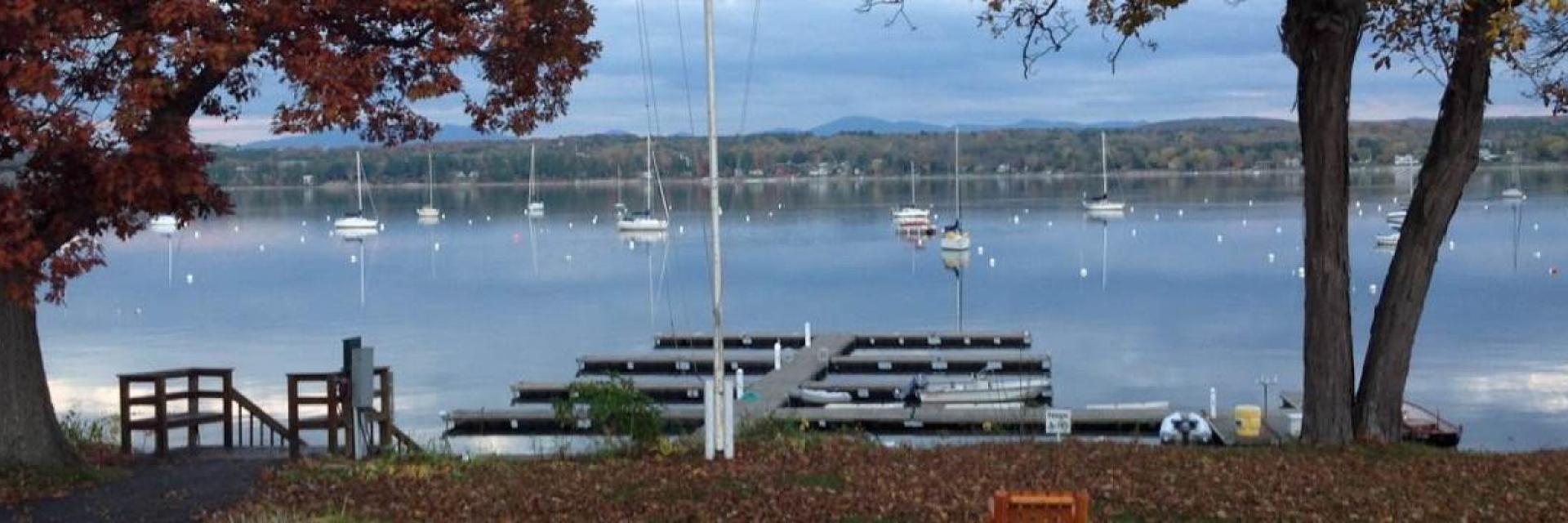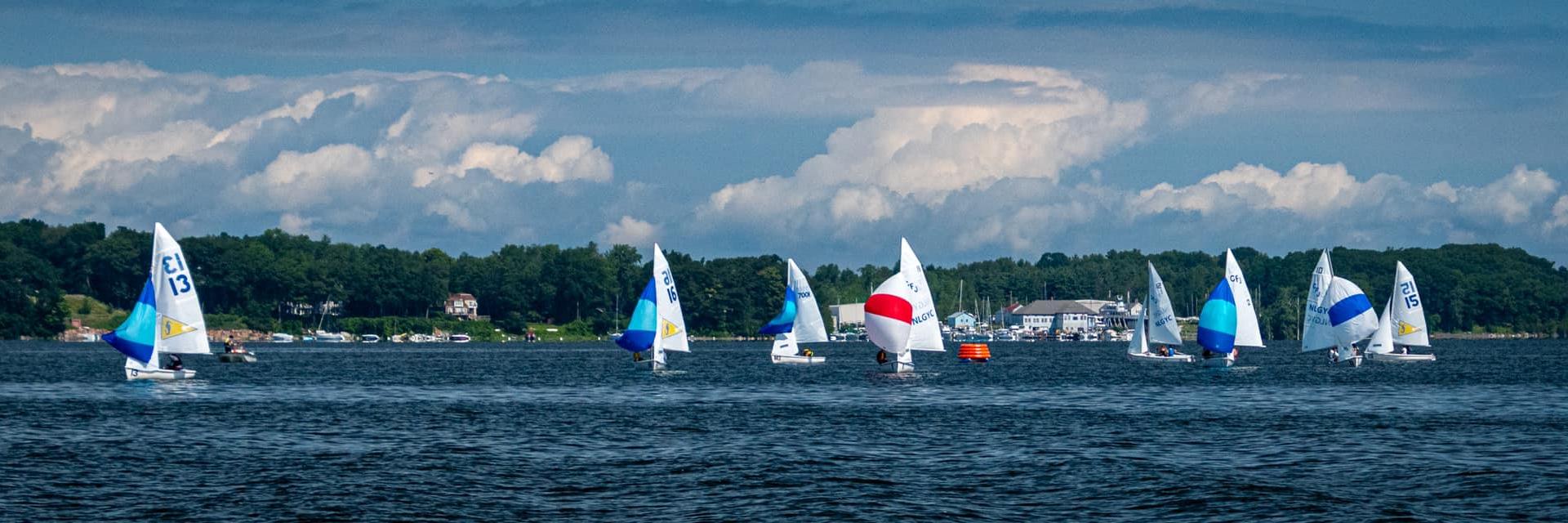Safety
Our "Yacht Docs", Fleet Surgeons Drs Larry & Roberta Coffin, themselves experienced Lake and ocean cruisers, have provided us with a series of articles dealing with issues of high interest to anyone who spends time on or near the water.
ALCOHOL
ACCIDENTS, or DRINKING and BOATING
The sobering facts are that alcohol impairs maritime vision performance in several spheres and navigational problem solving. In addition, a variety of surveys of boaters have shown that drinking while boating is much more common than drinking while driving.
Studies have shown that deaths resulting from boating-related accidents and deaths frequently involve elevated blood alcohol levels. They have also shown that drinking promotes risk-taking behaviors and impairs balance, a sense already challenged on a boat in the water, at the dock, at anchor, on a mooring, or underway. Alcohol exacerbates heat loss and hypothermia by dilating blood vessels.
Many people believe it is okay to have a "designated boater" as the captain, but what about the drinking passenger who is at increased risk for falling off a boat, or having a boating-related accident regardless of the sobriety of the boat operator?
In addition to the serious physiologic problems which occur to the boater using alcohol, under Vermont and Federal laws an intoxicated boater is subject to a prison sentence of one year and/or a substantial fine ($200-$5000).
PREVENTION TIP
The smart LCYC boater will be judicious in alcohol use, of course. "Sundowners" while cruising are popular, but what about the ride back to your boat in the dinghy after socializing on another boat, or the long, dark night at anchor? What about the cold beer while on the race course? Knowing some of the facts and practicing safe, sensible boating will prevent the LCYC boater from becoming a Coast Guard statistic.
HYPOTHERMIA
HYPOTHERMIA and COLD WATER SURVIVAL
Lake Champlain remains cold, or at least cool enough to cause hypothermia, all year round. Therefore, the risk of hypothermia is almost always present.
Lake Champlain 5-year (1996-2000) average monthly water temp (degrees F): Apr 38.2, May 47.0, June 59.8, July 67.8, Aug 70.8, Sept 66.2, Oct 55.2, Nov 47.4, Dec 41.0.
Falling in the water is only one cause of hypothermia when boating. The cold water temperatures of spring and fall increase the wind chill factor of those on deck.
In a recent fall, on a day with blustery NW winds, a 2-4 foot sea in the LCYC anchorage and snow predicted, we watched a boat under sail try repeatedly to pick up a mooring which had a dinghy attached with a long line. After several failed attempts, the boat sailed over the dinghy painter, cutting loose the dinghy from the mooring. Finally sails were taken down and a motor turned on. No PFDs were in sight . The next mooring attempt succeeded. Now, how to get ashore? The docks and dinghies were all on shore. Luckily someone trailing a dinghy came by, launched it and "rescued" the pair on the sailboat. They were quite cold by this time, and would be colder yet if they had to swim to shore.
It may take 10-15 minutes before the temperature of the heart and brain start to drop when the body is immersed in cold water. Survival in cold water depends on many factors, only one of which is the temperature of the water. By swimming or treading water, a person will cool about 35% faster than if remaining still. An average person, wearing light clothing and a PFD, may survive 2 1/2 to 3 hours in 50 degree water by remaining still and assuming the huddle position (legs up, arms wrapped around the body).
PREVENTION TIPS
1. Don't fall overboard, use all prevention strategies such as not boating alone, no drinking, using a tether when moving about on deck, etc.
2. Wear a PFD.
3. Wear several layers of clothing--consider a wet or dry suit.
4. Get hold of anything that floats.
5. Get out of the water and back onto a boat if capsized.
6. Swim to shore only if certain of success.
7. Have a practiced plan and equipment to get yourself or others back on board via ladder, steps, lifesling, floating trailing line overboard (keep it out of the propeller).
MOSQUITOS
BOATING and MOSQUITO BITES
Boaters on Lake Champlain should avoid mosquitoes and prevent mosquito bites. They are a distinct nuisance with resulting itching, swelling, and redness at the site of the bite, with possible ensuing local infection. In addition, mosquitoes carry various diseases. Until recently, Lake Champlain harbored no disease carrying mosquitoes. That has now changed.
West Nile virus is a virus mosquitoes sometimes transmit to humans. Mosquitoes are infected when they feed on an infected bird. West Nile virus has been confirmed in Vermont and in New York counties bordering Vermont. There is no interstate mosquito barrier! Most people exposed to the virus do not become seriously ill, having symptoms such as fever, headache, body aches, skin rash, and swollen lymph glands. More severe cases can lead to encephalitis, an infection of the brain. Symptoms of encephalitis are convulsions, coma, disorientation, and even death.
PREVENTION TIPS
1. Avoid anchoring near swampy, standing water or wetlands where mosquitoes may breed.
2. Limit on deck time at dawn or dusk, especially in May and June when mosquitoes are most active.
3. Use screens or screening materials in good repair to cover portholes, hatches, and the companionway. Promptly kill any mosquitoes found.
4. Use insect repellent that contains DEET (N,N-diethyl-meta-toluamide). Be sure to carefully follow the directions on the label. DEET can be harmful if overused. It should be applied sparingly to clothing and exposed areas of skin. It should not be applied to a child's face or hands, or to skin that is scratched or irritated. Use DEET repellents with concentrations below 10% for children and below 30% for adults. Do not use DEET on infants. Do not use DEET on children under age 3 or in concentrations greater than listed above without first consulting your health care provider. Cream, lotion, or stick formulas are best for applying to areas of exposed skin. Wash skin where DEET was applied when mosquito exposure has ended.
5. Consider spraying screens and using citronella candles and/or bug coils.
6. Pay special attention to any water that collects in a puddle, container, rigging, sails, or deck equipment. Egg to wiggler to stinger in FOUR days.
SUN EXPOSURE
SUNBURN and SUNTANS
The summer sun of July and August is finally here, and it's time to get "color" or a tan on the water where there is little shade and the water can reflect 50% of the suns rays back at you--Right? WRONG!
Both of the suns ultraviolet radiation wavelengths (UVA and UVB) are harmful and may lead to premature aging (wrinkled, leathery-looking skin), eye damage, cataracts, and most importantly, skin cancer. Since 1930, there has been an 1,800% increase in the incidence of malignant melanomas (the most serious of the skin cancers). Currently, one in five Americans develops some form of skin cancer. A blistering sunburn can double your lifetime risk of developing melanoma. A family history of skin cancer and chronic exposure to sunlight (as in boating) are also significant contributing factors.
PREVENTION TIPS
1. Avoid midday sun exposure between 10 a.m. to 3 p.m. Note that UVA rays are equally as strong early in the morning and late in the day as at noon, and as strong in the fall and spring as in midsummer. UVA is likely to produce damage through tanning, let alone burning, especially on or near the water.
2. Wear a hat with a 2" to 4" brim baseball caps don't do much for those sensitive ears, neck, and forehead.
3. Use sunscreens regularly. Read the labels; get one that withstands swimming and sweating. Use one with an SPF (sun protection factor against UVB rays) index of 30. Apply frequently and liberally.
4. Wear loose-fitting, tightly-woven, colored clothing, ideally with long sleeves and long pants or try the lines of sportswear especially created for sun protection with an SPF of 30. (A white cotton tee-shirt has an SPF rating of only 5 to 10).
5. Wear sunglasses, preferably ones that are polarized and ultraviolet-protected. Be sure to use one of those colorful strings to keep them attached to you.
6. Use an SPF lip block or consider emulating Dennis Connor and use zinc oxide ointment (the white stuff) on your lips and nose to physically block both UVA and UVB rays.
7. Avoid sun bathing!!!
TREATMENT
A mild sunburn (where the skin is pinkish-red, hurts, and is warm to the touch) may last 1-3 days and can be treated symptomatically with cool compresses, over-the-counter topical steroids, or other lotions.
A severe sunburn (where the skin is deep red, possibly swollen, and/or with blisters) may be associated with nausea, fever, chills, and may need medical care.
SWIMMERS' ITCH
Swimmer's itch, or cercarial dermatitis, is a skin rash caused by an allergic reaction to infection with the larvae of certain parasites released from infected snails. These larvae swim along shallow water at various times during the summer months.
Within minutes to days after swimming in contaminated water, your skin may tingle, burn, or itch, followed by small reddish pimples within 12 hours. These pimples may develop into small blisters, and the itching may last up to a week or more, but will gradually go away.
Children are most often affected because they swim, wade and play in the shallow water more than adults, and they usually do not towel themselves dry when they leave the water.
Many factors must be present for swimmer's itch to become a problem. The snails become infected with certain parasites of birds and mammals, and the larvae are released intermittently. The larvae cannot develop inside a human.
The rash and its itching and tingling may be relieved by the following non-prescription remedies:
apply anti-itch lotion
apply baking soda paste to the rash
bathe with baking soda
apply Calamine lotion
take colloidal oatmeal baths using a product such as Aveeno
apply cool compresses
apply corticosteroid cream
TRY NOT TO SCRATCH!
PREVENTION TIPS:
1. Avoid swimming in areas where swimmer's itch is a known problem (such as around the dinghy docks or along the shoreline between the docks).
2. Avoid swimming near or wading in marshy areas or any other areas where the water can become stagnant.
3. Briskly towel dry or shower immediately after leaving the water.
4. Do not attract birds or ducks to the area by feeding them.




